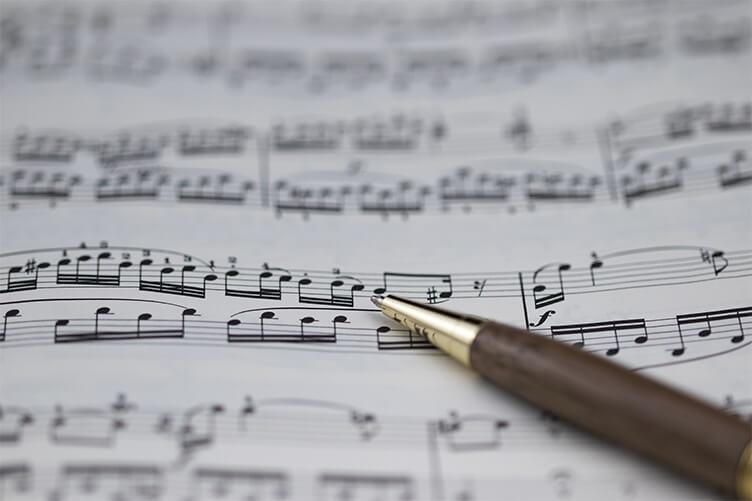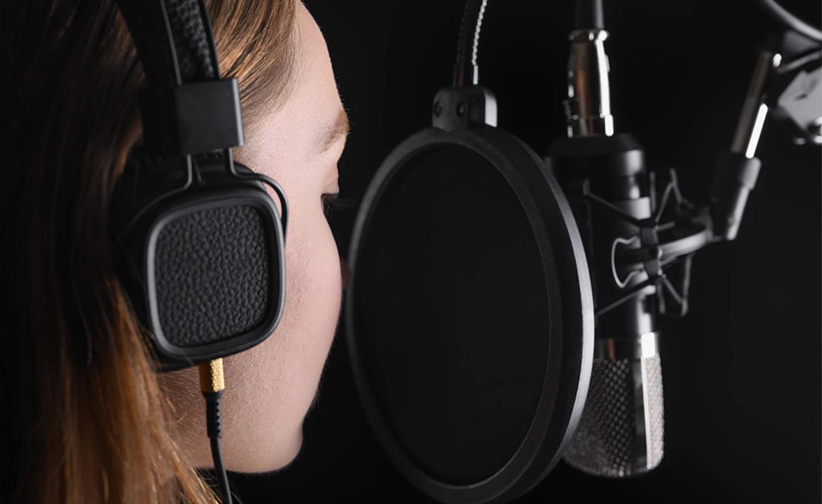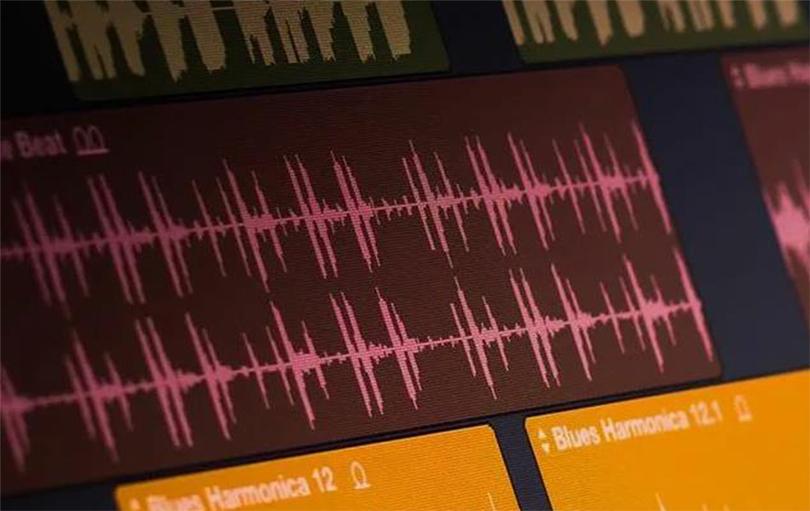Song structure

The composer’s ideas are in themselves only the basis for the future composition, a kind of framework on which the main elements are to be laid. The real work begins with the arrangement – it turns a set of musical ideas into a complete work that can captivate the listener and lead him through all the author’s ideas. The more interesting and enjoyable this musical path is, the more likely the listener will want to return to this song again and again.
An arrangement can be compared to a map that a song is created from. This map often includes time-tested solutions and routes that composers and arrangers use again and again. This does not mean that they approach the matter in a formulaic way – on the contrary, these structures and formulas have been tested by many hits, and they continue to work, helping to create new musical masterpieces.
Typical Song Structure in Popular Music
To understand how a typical song structure works, it is important to understand its basic parts. Typically, a song consists of the following eight elements:
- Introduction/Intro;
- Verse;
- Pre-Chorus/Bridge;
- Chorus;
- Post-Chorus/Tag;
- Interlude;
- Break;
- Outro.
Not all of these parts are necessarily present in every composition, and some may be repeated several times depending on the composer’s intention and the semantic load they carry.
Intro
The intro to a song is the part that first reaches the listener. Its main purpose is to set the audience up for the composition and smoothly lead to the first verse. The overall perception of the entire song largely depends on how interesting and exciting the intro is. If the intro immediately attracts attention, the likelihood that the listener will listen to the track to the end increases significantly.
Unless you are working in the progressive rock or math metal genres, try not to make the intro too long, so as not to tire the listener.
In terms of content, the intro can be varied – it all depends on the creativity of the author. It can consist of one or two elements of the main track, such as melody and drums or bass and keyboards, or repeat the structure of the chorus. The length of the intro also varies depending on the composer’s idea, but it usually takes 2, 4 or 8 bars.
Verse
A verse is the central semantic part of any song, where the main text is revealed and the informational message of the composition is laid. The verse not only conveys the main idea, but also prepares the listener for the following parts of the song.
Unlike the chorus or bridge, the text of the verse usually changes from one to the next, adding variety and depth to the narrative. However, strict adherence to this rule is not necessary – there are many wonderful songs in musical history where verses are simple and repetitive, but at the same time remain effective and memorable.
An example of a song structure and arrangement might look like this: the composition begins with an intro, followed by two verses, then four repeating choruses, followed by a solo or instrumental interlude, and the song ends with an outro. The track’s running time is about 3 minutes and 30 seconds, which allows for a rich and dynamic composition that holds the listener’s attention from start to finish.
Pre-Chorus/Bridge
The bridge, also known as the pre-chorus, serves as a link between the verse and the chorus. Since the chorus is usually the most memorable and emotional part of the song, the bridge helps smooth the transition from verse to chorus by reducing the contrast between them.
If the harmony of the verse and chorus is based on the same chords, the bridge can add variety by changing the chord progression and adding fresh musical elements. From the listener’s perspective, the pre-chorus makes the composition more interesting and dynamic, preparing for the climax in the chorus.
Chorus (Refrain)
The chorus is one of the key culminating parts of the song, which should be memorable but not intrusive. It is optimal to include 2-4 choruses of varying lengths in the composition. Since the chorus is the most repeated part of the track, it concentrates the main lyrical and musical ideas, and also contains the main message of the song and the musical hook that attracts the listener’s attention.
It is important not to overload the composition with repeated choruses. After all, we are creating something unique, and not a typical hit that attracts attention only by its intrusiveness.
As a rule, the first chorus consists of 8 bars, creating a single repetition. The second chorus can double, taking up 16 bars and including small changes to maintain interest. The final chorus, appearing at the end of the song, can vary from 16 to 32 bars. However, from experience, it is better to limit yourself to a smaller number of choruses at the end of the composition in order to maintain its dynamics and interest for the listener.
Post-Chorus/Tag
Sometimes the last line of a chorus can extend beyond the bars allotted to it, which can be a problem, especially if the lyrics of the next section of the song, such as a verse, begin with a pickup. To avoid overlapping words and to ensure a smooth transition between sections of the composition, composers and arrangers often add a 2-4 bar rest. This allows the vocalist to take a short break before continuing the song and makes the musical narrative more fluid.
Post-chorus, like pre-chorus, can take any form: from a repetition of elements of the chorus or an introduction with a simple chant by the backing vocalists to an instrumental break or a variation of the main melody. It all depends on the creative intent of the arranger and composer, as well as the atmosphere they want to create in the song.
What is popular music?
When we talk about popular music, there is often confusion, and many believe that we are talking exclusively about pop music. However, this is a misconception. The terms “Popular Music” and “Pop Music” are not synonymous and refer to different musical genres.
Pop music refers to a specific genre that is characterized by ease of perception, simple melodies, and a focus on the mass audience.
At the same time, the term “Popular Music” covers a wide range of musical styles that are popular with a wide audience, but are not necessarily associated with the pop genre. This includes rock, fusion, rhythm and blues, industrial, disco, rock and roll, reggae, nu metal, alternative, and many other styles. Thus, popular music is a variety of styles aimed at the mass audience.
Bridge (Middle 8)
In Western music, the bridge towards the end of a song is often called Middle 8, which literally translates as “middle eight”. Sometimes musicians also call Middle 8 the bridge. This part of the composition is usually intended for the instrumental section: solos or altered parts and melodies can be heard here, adding dynamics and variety.
The main purpose of Middle 8 is to create a climax to the composition before the last chorus or break. Throughout the song, the dynamics and energy gradually increase, reaching their peak in this bridge. As the name suggests, its length is usually 8 bars, although longer versions are also available.
Break
After the intro, a short pause is sometimes inserted, called a break (from the English Break – interruption, pause). The break serves to give the listener a short respite. The constant saturation of the composition can be tiring, and the break helps to balance the energy of the song.
The presence of a break and intro depends on the context. If the composition has a solo, then it is logical to use a calm break to create a contrast. However, no one forbids adding another instrumental or vocal intro after the solo or even returning to the verse.
The break is usually minimalist and is based on the same chords and melody as the chorus. Sometimes it can act as a small pre-chorus before the final chorus. The length of the break varies from 4 to 16 bars.
Outro
The outro or outro is the final part of the song. It can echo the intro or be its complete opposite. The outro can be several repetitions of the chorus with a gradual fading out (Fade Out) or be completely unique and unlike other parts of the composition.
It is important not to drag out the outro: if it is too long, the listener may get tired and start thinking: “When will this end?” What the outro will be depends on the nature of the entire song. In energetic tracks, it may be appropriate to end the composition by repeating the choruses, and in ballads, other chords can be used to create a final accent. Ultimately, the choice of the outro remains with the composer.
The final structure of a song in popular music
The song can be visualized as a graph, where the movement of the music and its dynamics resemble a parabola, with alternating rises and falls in tension.
Throughout the composition, the musical energy gradually increases, reaches its peak at the climax, and then smoothly decreases towards the end, creating a harmonious conclusion. Such a graph clearly shows how the music leads the listener through emotional peaks and valleys, making each part of the song meaningful and interconnected.
| Part of the song | Possible length |
|---|---|
| Intro | 2-8 bars |
| Verse | 8-32 bars |
| Pre-chorus/Bridge | 2-16 bars |
| Chorus | 8-16 bars |
| Post-chorus/Tag | 2-4 bars |
| Bridge | 8 bars (sometimes 16) |
| Break | 4-16 bars |
| Outro | 2-4 bars |
You shouldn’t make all parts of the future song equally long, for example, 32 bars each – each element of the composition has its own optimal length that should be taken into account. Each song is unique and requires an individual approach, so it is important not to overload the arrangement and not to try to include all possible elements in it. A balanced distribution of parts will keep the listener’s interest and create a harmonious structure of the composition.
Typical song structure in electronic music
Unlike popular music, the structure of electronic tracks has its own characteristics. One of the reasons for this is the influence of radio formats, where tracks must fit into a certain broadcast time, which excludes the use of endless mixes.
In addition, the arrangement of dance and electronic music should provide comfort for dancers. Long sections in such tracks alternate with short ones to give dancers a chance to rest. Typically, a dance composition consists of seven key parts:
- Introductory beat;
- Breakdown;
- Build-up;
- Drop;
- Middle break;
- Second drop;
- Final beat.
An example of such a typical structure is the track “United We Dance” by Vicetone, which well illustrates how exactly the elements are built in electronic, dance and club music.
This is a section consisting of sixteen or more bars of drums or percussion. Characteristic features of the intro in electronic music are minimalism in the use of instruments, an emphasis on rhythm and a gradual, unhurried appearance of the main melody. The main purpose of the intro beat is to provide the DJ with the opportunity to smoothly and carefully mix the new track with the previous one, maintaining the harmony of the setlist.
Breakdown
A breakdown is the moment when the composition returns to its main elements. In this section, drums are often completely absent, creating more space for other musical components. The breakdown usually includes the main melody line of the track, which gradually intensifies and is overgrown with additional instruments, increasing the density of the sound. The duration of the breakdown can vary – from 16 to 32 bars or more.
Build-Up
The build-up serves as a preparation for the chorus, similar to the pre-chorus in popular music. This section of the composition gradually builds tension due to the acceleration of the drum parts and the use of risers – synthesizer sounds that smoothly increase in volume and pitch, becoming the central element of the arrangement.
Drop
A drop is the culmination of a track, similar to a chorus in popular music. It is intended to make a strong impression on the listener with powerful grooves, a pumping bass, a dense beat and a bright synthesizer hook, which is the main musical theme of the entire track.
Middle Break
A middle break is the central part of the composition, containing unique musical elements that do not go beyond the main melody. This section is often used to smoothly transition to the next build-up, which is usually shorter than the first. A middle break can be a variation on the theme of the first breakdown or drop, but often differs from other parts of the track, bringing fresh ideas and changes to the sound.
This track will start with a chorus, setting the mood and energy right away. After that, two different verses will follow, each bringing new elements and variety to the story of the song. In the middle of the composition, a solo or instrumental interlude will be inserted to add dynamics and depth to the sound. The track will end with several tags – short interludes that come immediately after the chorus, which will enhance the effect and fix the key musical ideas of the composition in the listener’s memory.
Second Drop
The second drop usually has a similar structure and energy to the first, but includes a few changes that add variety to the composition. These differences can be in the form of a different hook, a new bassline, or a modified beat, which helps to freshen up the sound and keep the listener interested.
Outro Beat
Similar to the intro beat, the outro beat plays an important role in dance music, helping the DJ smoothly mix the ending track into the next one in the set. This is why this part of the composition is often the longest, providing the necessary space for the transition.
Outro Song Structure in Electronic Music
In order to fit the radio format, the original versions of club tracks, which can last from 5 to 10 minutes, are edited. As a result, all parts of the composition are shortened so that the final track does not exceed 3-4 minutes. This allows for a more compact structure, similar to a standard pop song, while maintaining the key elements and energy of the original.
| Song Part | Possible length |
|---|---|
| Intro Beat | from 16 bars |
| Breakdown | 16-32 bars |
| Build-up | 16-32 bars |
| Drop | 16 bars |
| Middle Break | 16-32 bars |
| Second Drop | 16-32 bars |
| Outro Beat | from 16 bars |
Basic Song Structure Forms: ABA, AABA, AAA, and ABABCB
When planning an arrangement, composers and arrangers often resort to using one of four common forms: ABA, AABA, AAA, and ABABCB.
The ABA form is the most popular song structure. When people talk about the standard verse-chorus-verse pattern, they usually mean the ABA form. A characteristic feature of this form is the presence of two identical sections (A) and one contrasting section (B). The contrast in section B is created by changing the harmony, key, rhythm, or changing the overall mood of the music. In ABA form, sections A and B can be any part of the song: verses, choruses, bridges, or solos.
If you imagine a song structure in ABA form, it might look like one of the following:
| Verse 1 (A) | Chorus 1 (A) |
| Chorus (B) | Interlude (B) |
| Verse 2 (A) | Chorus 2 (A) |
| Chorus 2 (A) | Verse 1 (A) |
| Break (B) | Pre-chorus (B) |
| Chorus 3 (A) | Verse 2 (A) |
A great example of ABA form is the jazz classic “I Got Rhythm” by George Gershwin. In this composition, the A sections are played in the key of B flat, with two chords per bar, which gives the music energy and dynamics. In the B section, the key changes, the rhythm slows down – one chord is stretched out over two bars, and the music becomes less dynamic, creating a contrast with the A sections.
AABA form is a development of the ABA scheme. In this structure, the A section is repeated twice, then there is a transition to a contrasting B section, after which the composition returns to the A section. This approach allows you to create a composition with a clearly expressed main theme and a contrasting middle. The structure of a song according to the AABA scheme might look like this: A (intro) – A (repeat) – B (contrast) – A (return to main theme).
| Verse 1 (A) | Chorus 1 (A) |
| Verse 2 (A) | Chorus 2 (A) |
| Chorus (B) | Bridge (B) |
| Verse 3 (A) | Chorus 3 (A) |
| Chorus 2 (A) | Verse 1 (A) |
| Chorus 3 (A) | Verse 2 (A) |
| Break (B) | Prechorus (B) |
| Chorus 3 (A) | Verse 3 (A) |
Although AABA form begins with two identical A sections, this does not mean that they have to be identical. Composers and arrangers often make slight changes to the harmony, melody, or instrumentation as the section progresses to keep the listener interested. Sometimes the changes are limited to individual parts of the melody, making them more expressive. It is also common to see a combination of ABA and AABA forms, where elements of both structures are intertwined to create variety in the composition.
AAA form involves using three identical sections, be they verses or choruses, with minor harmonic or melodic variations. This allows for a cohesive composition with minimal changes, while still keeping the listener interested.
ABABCB form offers a more complex structure. The composer begins with a standard verse-chorus-verse-chorus pattern, then adds a C section, which can be a bridge, a solo, or a break. The composition then returns to the chorus, creating a balanced combination of repetition and novelty.
Song structure of The Beatles – Back in the U.S.S.R.
The song “Back in the U.S.S.R.” by The Beatles was written as a kind of response to the Chuck Berry hit “Back in the USA”. Created in 1968, this composition still sounds relevant and modern today. The song appeared during the period when British Prime Minister Harold Wilson launched a political campaign under the slogan “I’m backing Britain”. This slogan was widely placed on campaign posters throughout the country. Paul McCartney, inspired by this campaign, came up with the line “I’m backing (back in) the U.S.S.R.”, which became a kind of satirical response to the political ideas that dominated English society at the time. The British public appreciated McCartney’s irony, but the joke remained incomprehensible to many listeners in the United States. The composition was written by Paul McCartney in collaboration with John Lennon and opens the famous untitled two-disc album of The Beatles from 1968, which is also known as “The White Album”.
The peculiarity of “Back in the U.S.S.R.” is its classic arrangement for pop and rock music. The song is performed in the key of C minor, with a tempo of 120 beats per minute and a size of 4/4.
Since YouTube often has problems with posting Beatles songs, instead of the studio version, we suggest watching a live performance of the composition by Paul McCartney in Moscow in 2002. However, in the following discussion, we will talk about the studio recording.
0:00. Intro
The song begins with the characteristic sound of a plane landing, followed by a 4-bar intro on the chord E7. After these four bars, the chord A sounds on the downbeat, smoothly transitioning into the first verse.
0:15. Verse 1
As Paul McCartney begins singing about a sleepless night and a flight from Miami, the song picks up the pace. The first verse consists of 8 bars, divided into two 4-bar blocks, built on the chords A, D, C, D.
0:28. Chorus 1
The chorus consists of six bars, which is unusual for pop music. The first three bars are built on the same chords as the verse (A, C, D), and here the vocal hook appears with the phrase “Back in the USSR!”. The next three bars smoothly lead the listener to the second verse, which repeats the structure and harmony of the first.
0:52. Chorus 2
After the second verse, the song moves into the chorus again, which is structurally and harmonically identical to the first. The same vocal hook and main guitar riff are repeated here. However, the length of the second chorus is slightly different – it consists of 7.5 bars: 7 bars in 4/4 and 1 bar in 2/4.
1:04. Post-chorus and break
At the 1:04 mark, the post-chorus begins, which is a new section of the song. This part is based on harmonies and backing vocals in the style of The Beach Boys and includes the chord progression D, A, D, Bm7, E7, D7, A, A. The post-chorus consists of eight bars, followed by a two-bar break on the chords A and E, preparing the transition to the guitar solo.
1:21. Guitar Solo
The guitar solo follows the vocal melody and is supported by the chords from the verses. This section is similar to the previous verses and choruses: the 8 bars of the verse smoothly transition into a six-bar chorus and end with another 10-bar post-chorus.
2:01. Verse 3
The last verse is identical to the previous ones, but with the addition of a lead guitar part that plays on the A chord. The third verse transitions into another six-bar chorus.
2:25. Outro
The finale of “Back in the U.S.S.R.” is built on a bluesy riff with an A chord and backing vocal harmonies with a repeated chant of “Woo-ooo-oo”. The last section consists of 6 bars and repeats until the sound of a landing airplane appears at the 2:40 mark, ending the composition.
The final structure of the song The Beatles – Back in the U.S.S.R.
| Song Part | Length |
|---|---|
| Intro | 4 bars |
| Verse 1 | 8 bars |
| Chorus 1 | 6 bars |
| Verse 2 | 8 bars |
| Chorus 2 | 7.5 bars |
| Post-Chorus | 8 bars |
| Break | 2 bars |
| Guitar Solo | 24 bars |
| Verse 3 | 8 bars |
| Chorus 3 | 6 bars |
| Outro | 6 bars |
Song structure 2Pac feat. Dr. Dre – California Love
Dr. Dre is one of the most influential music producers of our time. His unique talent and approach to arrangement made the hip-hop group N.W.A. real idols of millions. Thanks to Dre, it became obvious that music created by black artists can be not only popular, but also commercially successful among a wide audience.
Musicians who have worked with Dr. Dre often note his perfectionism. He does not release a song until he is absolutely sure of its quality. Sometimes work on a composition can take months or even years, but the end result always meets expectations, creating real hits.
However, the famous track “California Love” was created by Dre in 1995 in just a few weeks. Initially, this song was prepared for his solo album “The Chronic II: A New World Odor (Poppa’s Got A Brand New Funk)”, but for a number of reasons the album was never completed. At the same time, in 1995, Tupac Shakur, a close friend of Dre, was released from prison. Wanting to celebrate this event and support Tupac, Dre decided to use a long-established backing track and, together with Roger Troutman, began working on a track that would soon become the legendary “California Love”.
The song was released in October 1995 on Tupac’s first album “All Eyez on Me”. The single instantly rose to the top of all American charts and held the lead for about two weeks. Subsequently, the track was nominated for several Grammy Awards and became one of the best G-Funk records.
The basis for “California Love” was a reworked keyboard sample from a little-known Joe Cocker song “Woman To Woman”. The composition is written in the key of B-flat major, with a single chord, the size is 4/4, and the tempo is 92 beats per minute.
0:00. Intro
The song begins with Roger Troutman singing the phrase “California Love” over a talkbox. At 0:03, the beat kicks in and over the next four bars, drums, bass, keys, and a brass section appear, playing the main musical theme of the song. These four bars set the stage for the rest of the song, with the keyboard theme remaining constant throughout the track and the other musical elements fading in and out of the arrangement.
0:13. Chorus 1
After four bars of intro, the brass section fades out, giving way to processed vocals that carry the chorus over the next 12 bars. One of the key features of the chorus is the shimmering synths that play at the beginning of each bar, accentuating the track’s main chord (B-flat major) and emphasizing its key. The chorus transitions smoothly into the first verse, which begins with an upward movement of the brass instruments.
0:45. Verse 1
The first verse lasts 16 bars, during which Dr. Dre raps his lyrics. Whistles are added to the arrangement, and the first eight bars retain the elements present in the intro. The second eight bars are supplemented with new synth parts and a vocal chant, creating a richer sound.
1:27. Chorus 2
The second chorus is similar to the first, but with a number of changes: additional vocal phrases and female backing vocals appear. The transition to the next part of the composition is again indicated by brass instruments.
1:58. Bridge
After the second chorus, the bridge begins instead of the expected verse. On the words “Shake, shake it, baby” a keyboard riff and beat is heard, complemented by the sounds of thunder in each bar. This bridge lasts eight bars, creating a contrast with the previous parts of the composition.
2:19. Verse 2
The second verse is identical to the first in both length and instrumentation, but the lyrics are sung by 2Pac, which brings fresh energy and dynamics to the track.
3:01. Chorus 3
The third chorus coincides with the previous ones and smoothly transitions into another interlude, similar to the one that sounded after the second chorus.
3:54. Outro
From the 3:54 mark, the song begins to move towards its end. The sound of the instruments gradually fades out, and the arrangement becomes less saturated. The outro is a 20-bar loop consisting of elements of the verse and chorus, with a constant repetition of the main line of the song, gradually leading the listener to the end of the composition.
Final structure of the song 2Pac feat. Dr. Dre — California Love
| Song Part | Length |
|---|---|
| Intro | Bar + 4 bars |
| Chorus 1 | 12 bars |
| Verse 1 | 16 bars |
| Chorus 2 | 12 bars |
| Bridge 1 | 8 bars |
| Verse 2 | 16 bars |
| Chorus 3 | 12 bars |
| Bridge 2 | 8 bars |
| Outro | 8 bars |
The arrangement of “California Love” is done in such a way that it is difficult to separate the individual parts of the song from each other: its sound is monolithic and a little monotonous, creating a feeling of a smooth, continuous flow without obvious structural boundaries.
In addition, “California Love” stands out for its unusual structure. Instead of the standard “Intro-verse-chorus-verse-chorus” scheme, a more original approach is used here: “Intro-chorus-verse-chorus-bridge”. Such a shuffled structure adds dynamism and originality to the composition, making it unique in comparison with traditional musical constructions.
Song structure Martin Garrix – Animals
Martin Garrix’s “Animals”, released in 2014, instantly became a hit and secured its place at the top of the world charts. Despite its popularity, the song has a typical arrangement for the genre: the main emphasis is on a powerful 4/4 beat and a catchy percussion riff that gets any dance floor going.
The song is written in the key of F minor, with a tempo of 128 beats per minute, which is standard for many dance tracks.
It can be difficult to find the original 5:04 mix on YouTube, so a video clip with a radio version of the song is attached to the material. Please note that the timings may not match the original version. If anyone has a link to the full version of the composition, we would be glad if you shared it in the comments.
0:00. Intro Beat
The composition begins with a minimalistic intro, where the first 16 bars are dominated by the kick and ride, reminiscent of a metronome. Along with the rhythm, an arpeggiated synthesizer sounds, whose sound is abundantly processed with reverb. A gradual increase in the strength and power of the synthesizer smoothly leads the listener to the next segment of the composition.
0:30. Bass Intro
At this stage, a low bass enters, which is based on the rhythmic hits of the kick. The arpeggiated synthesizer fades into the background, and a new synthesizer appears in the mix, gradually strengthening its sound. Towards the end of this intro, you can hear an inverted hit on the cymbal, which adds drama before the transition.
1:00. Mini-Break
This short four-bar break serves as a kind of pause, during which the arrangement almost completely freezes. The only sounds are the ticking of a clock, a gradually fading bass line, and a cymbal strike. This moment prepares the listener for the main melody line to appear.
1:08. Breakdown 1
The ticking of a clock gradually transforms into a percussion part. After eight bars of soft melody, an aggressive synth enters the composition, repeating the main theme with powerful chords. These synths are supported by snare hits and claps, accentuating each beat of the bar.
1:37. Build-up
The eight-bar build-up reaches a peak of tension, preparing the composition for the drop. Accelerating snare hits, a synth riff, and bursts of laser sounds lead to a climax, which ends with a vocal sample.
1:53. Drop 1
The first drop offers an interesting solution: instead of using the main melody line, Garrix introduces a new riff, which is supported by a powerful beat and references to the main theme of the composition.
2:30. Breakdown 2
After another four-bar mini-break, the synth returns to the mix, playing the main theme of the track. As before, the breakdown smoothly transitions into another build-up.
3:15. Drop 2
The second drop is almost identical to the first, but its duration is increased by 16 bars. After the first eight bars, the vocal sample sounds again, to which synth chords are added.
3:58. Outro
After a short insertion with a ticking clock, the arrangement returns to the elements of the intro. As it approaches the end, the sound of the composition becomes softer and more subtle. In the final moments of the track, the arpeggiated synth again comes to the fore, creating a contrast between the beginning and the end.
Final structure of the song Martin Garrix — Animals
| Song Section | Length |
|---|---|
| Intro Beat | Bar + 4 bars |
| Bass Intro | 12 bars |
| Mini Break 1 | 4 bars |
| Breakdown 1 | 12 bars |
| Build Up 1 | 8 bars |
| Drop 1 | 16 bars |
| Mini Break 2 | 4 bars |
| Breakdown 2 | 8 bars |
| Build Up 2 | 8 bars |
| Drop 2 | 32 bars |
| Outro | 32 bars |










